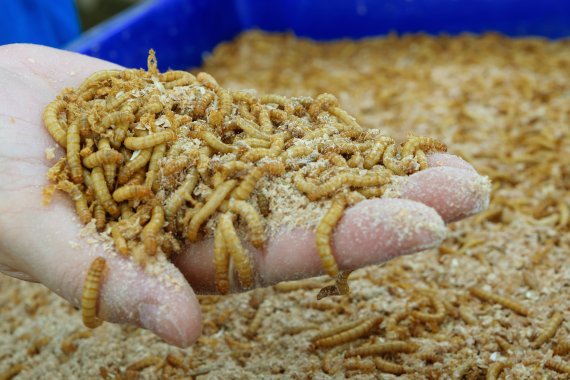Photo: Shutterstock
Currently, mealworms are mainly bred on wheat bran, explains researcher Sarah van Broekhoven of the Laboratory for Entomology. But they could be bred more sustainably, for example by breeding the larvae on breadcrumbs or other leftovers. However, food waste can contain mycotoxins such as deoxynivalenol (DON for short). If people ingest this substance, it can cause symptoms such as vomiting and diarrhoea. It was not clear, either, what effect the toxins have on the mealworms themselves. Van Broekhoven: ‘A lot of research has been done on fungal toxins in livestock feed, but relatively little is known about the risks it poses in the breeding of edible insects.’
The researchers fed mealworms of the Tenebrio molitor L. species three different diets: DON-free feed, feed that is naturally infected with DON (4.9 mg per kg), and feed to which extra DON was added (8 mg per kg). The mealworms thrived equally on all three diets and no DON was found in the fully grown mealworms. It was found in their faeces, however.
The larvae fed on naturally infected feed eventually excreted 14 percent of the DON they had ingested. The larvae fed on feed with additional DON excreted three times that much. Apparently, then, most of the toxins were broken down. It is no problem for the consumer that the toxins end up in the faeces, says Van Broekhoven, since the mealworms are cleaned first. ‘It could pose a risk, though, for the people who work with the mealworms.’
So it seems unlikely that mealworms bred on waste flows are a food safety risk. But more research must be done before we can state this with absolute certainty, says Van Broekhoven. ‘Now we only looked at the DON mycotoxin because we know it is fairly common in Europe. But we don’t know what the situation is for other mycotoxins. And further research is also needed on how mealworms break down DON, and whether the substances released in that process are safe.’

